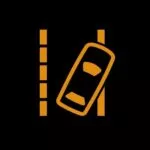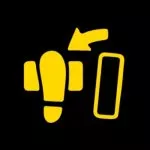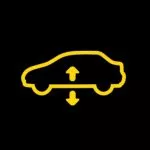Toyota C-HR Warning Lights
The Most Common Toyota C-HR Symbols
These are the most common dashboard symbols that you will see in your Toyota C-HR. Click on one to see more information or scroll further down to see the link to the owner's manual where you can find even more symbols.
Can't see the warning light you are looking for? Check the official manual:
View Owner's Manual
- Manufacturer: Toyota
- Data Source: Owner's Manual
About the C-HR
The Toyota C-HR was first released back in November 2016 and now competes in what is arguably the fiercest and most overpopulated automotive category: the subcompact crossover SUV category. Competitors include the Mazda CX-30, Hyundai Kona, Kia Soul, VW Taos, and others.
The name “C-HR” can apparently stand for a number of things, namely: “Compact High Rider,” or “Cross Hatch Run-about,” or “Coupe High Rider.” All the ‘C’ words here seem to denote different aspects of the vehicle’s exterior design. Indeed one area the C-HR receives much praise is for its edgy exterior and great curb appeal.
This Toyota comes in 3 trim levels: XLE (from $25,345), Nightshade (from $25,860), and Limited (from $28,365). Under the hood sits a 2.0-liter inline-4 engine delivering 144-hp and 139 lb-ft, which is paired with a CVT. This engine only delivers a slow 0 to 60-mph time of 11 seconds.
Many have pointed to the need for a turbo or some similar option in the C-HR, as its acceleration (especially with the CVT) is rather sluggish and uninspiring. If one is trying to get off the mark quickly on a busy road, for instance, it can be frustrating.
However, the interior design is attractive and well-appointed with a faux-leather dashboard with matching stitching, and nice finishes across all the surfaces. The infotainment system is also very user-friendly, if somewhat old-fashioned. It does include proper buttons/dials rather than a pure touchscreen system, which does make adjusting it easier while on the road.
The rear seats are a bit of a squeeze, but there is dual-zone climate control, and 19.1 cubic feet of cargo space with the rear seats up. That cargo space goes up to 37 cubic feet when the rear seats are laid down.





















































